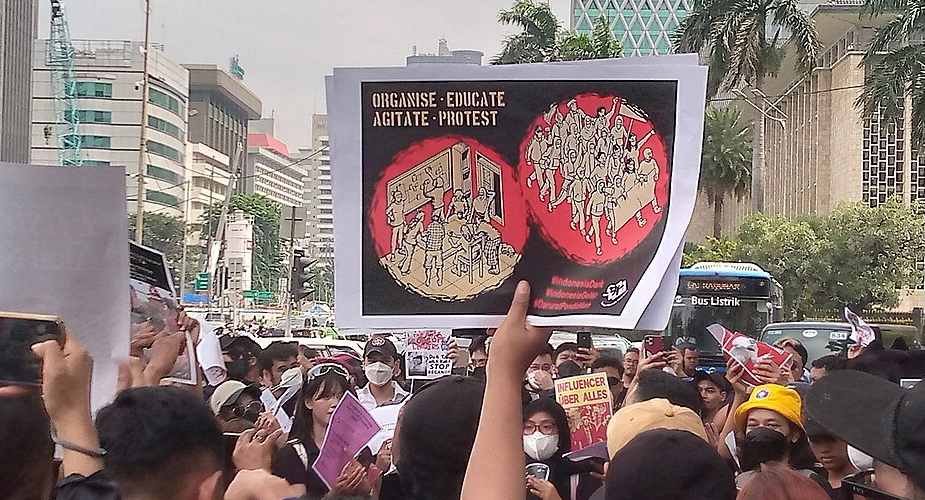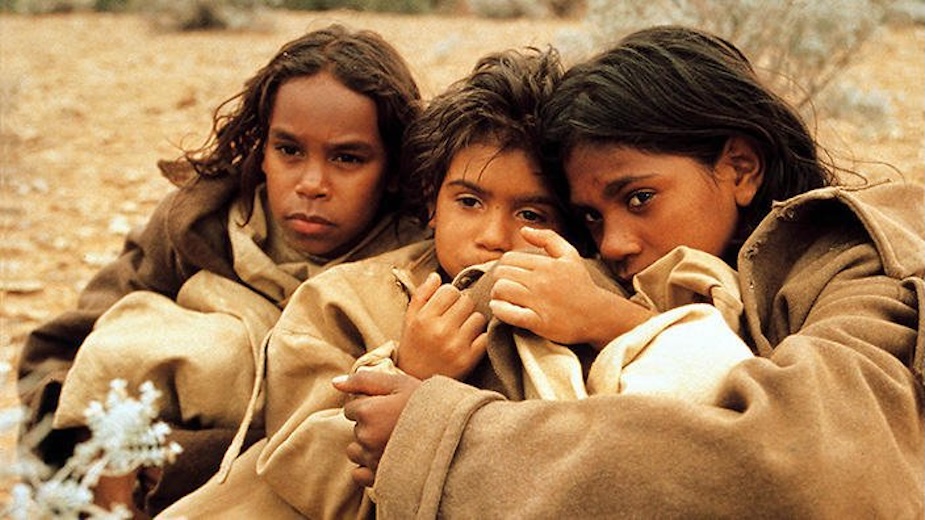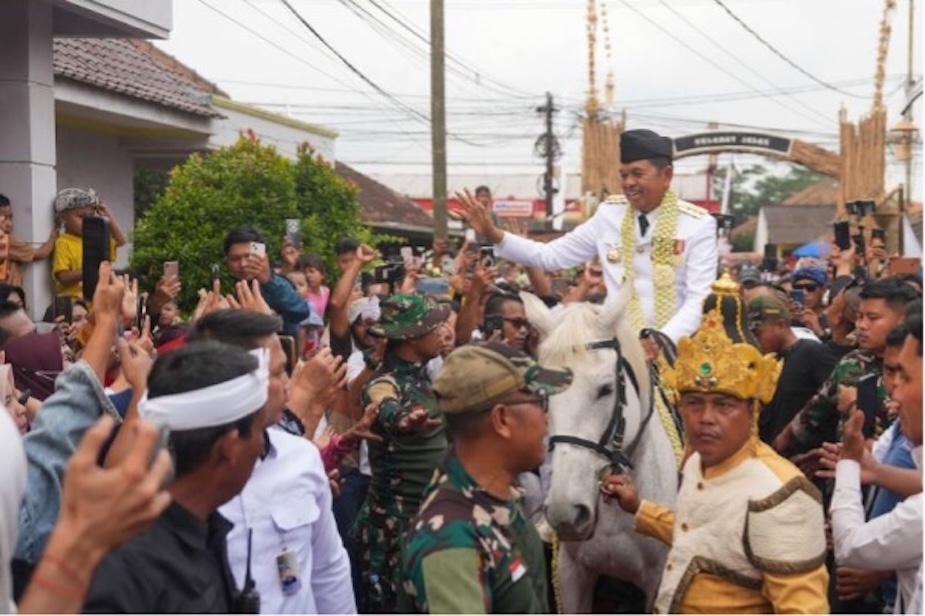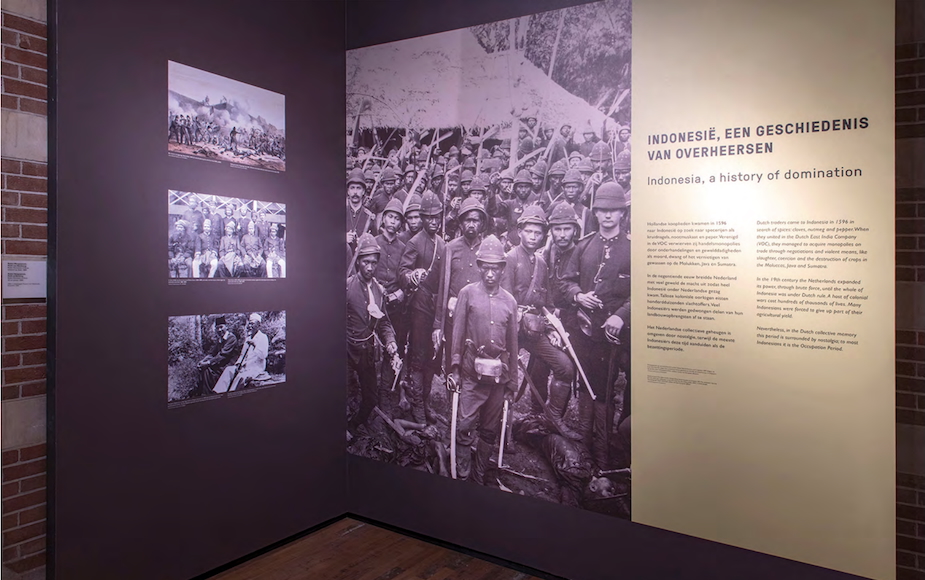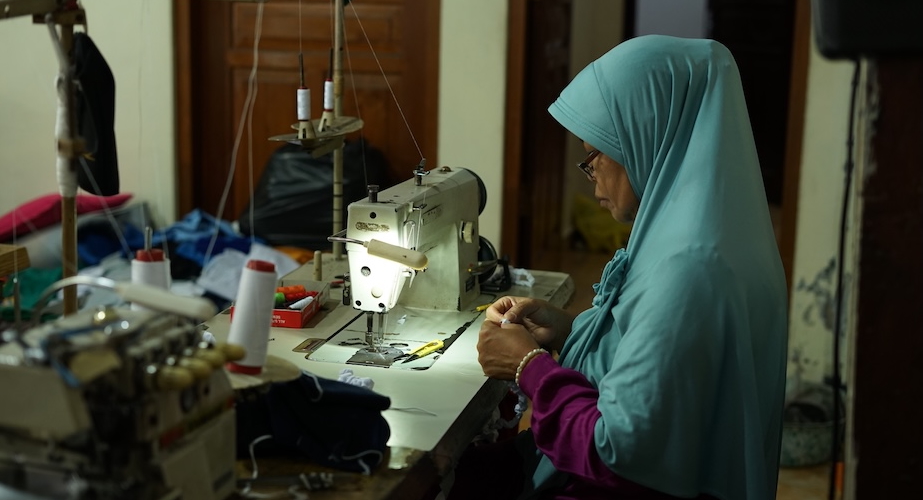An exploding tourist industry on Lombok's beaches breaks the lives of villagers. IRIP NEWS SERVICE reports.
In the pre-dawn of March 5th 1996 some 24 truckloads of police and troops descended on the small farming village of Rowok near the south coast of Lombok. When they had finished their work all the houses and other buildings in the village had been destroyed. Most of its inhabitants were trucked away to their 'traditional' villages nearby.
Over the next week or so all their possessions were confiscated or stolen by the government and its agents. Rowok's more than 300 people are now refugees in their own country. Some are sheltering in the provincial capital Mataram. All are dependent on charity for their existence. They told the author all they have left is the clothes they were wearing when the troops arrived.
Court order
At midnight on March 4th their time had expired. Their eviction was based on a court order obtained by the regency (kabupaten). This was the end of one phase of a struggle to resist eviction that had been running since 1994. During the forcible eviction, more than 36 villagers were seriously injured by the police and soldiers. Several had multiple fractures of major bones. Many had visible scalp wounds and other injuries.
In March and April there were protests by university students in Lombok and Bali, and the national government began an 'unofficial' investigation into the events leading up to the morning of March 5th.
Speculator
The farming people of Rowok were evicted because they refused to vacate their land and accept the low payments offered by the speculator/ developer PT Sinar Rowok Indah. In contrast, government employees in the village were paid close to market prices for their land. Since 1994, assisted by a small group of local lawyers, the Rowok farmers have used the limited legal means available to defend their right to the land or, if forced to leave, adequate payment.
Complicating the issue is the land titling system of Indonesia. The people of Rowok do not have formal title to their land, even though the National Land Agency (BPN) surveyed it in 1990 so titles could be issued. This makes it unclear whether they can sell (if they have title) or only receive compensation (if the land still formally belongs to the state). If they own the land then the developer has to negotiate a price directly with them. Such negotiations have as yet not been started, let alone completed.
Machinations
The two main shareholders in PT Sinar Rowok Indah are Franky Lesmana (one of President Suharto's relatives, with 60%) and Andri Setiawan (son of Governor Warsito of West Nusa Tenggara, with 10%). There are four others.
Space forbids a detailed explanation of the machinations used by PT Rowok to acquire the land at the lowest possible cost, and to ensure the inhabitants were evicted with the least possible fuss. According to local legal experts, these machinations were facilitated by government officials. Suffice it to note that, given the company's connections, many forms of technical, administrative and legal assistance were forthcoming from all levels of the civil and military structure in Lombok.
Sasak
Lombok is slated for rapid tourism development. Rowok may be among the first of many similar clashes between Sasak farming communities and tourist development speculators. Few Sasak speak Indonesian or have completed primary school, while the speculators are backed by the full force of the judiciary, police and military. Many of the speculators are connected to the presidential family or to other senior government officials. Hence the process leading to eviction usually occurs outside the law, and protests and investigations are stifled.
What may surprise some readers is that so many people - whose duty as government employees is to improve local welfare - would cooperate over such an extended period (1990-96) to help an 'outside' company defraud local people. It demonstrates how the current regime furthers its own economic interests - which might be seen as long-term planning to further defraud the already poor.
Land for free
In Indonesia, if you have the right connections and sufficient money (they often go together) you can acquire land for free - well, at least at bargain basement prices - in a nation where land prices are higher in absolute terms than in Australia. How is this possible?
All you need is an 'izin lokasi' or 'izin prinsip' (a location permit or 'in principle' approval). This gives you the sole right to purchase land within a designated area. The current inhabitants have little if any chance to challenge what is planned, or receive fair compensation or assistance in relocation.
The process is made more invidious as the izin may be issued secretly by the local office of BPN. Furthermore, third parties are often used to covertly purchase land cheaply before local people become aware of what is occurring. This is exactly what happened at Rowok.
When in addition the local government designates an area for 'development' - shopping malls, factories, high rise apartments, roads or tourism - these izin become an unstoppable force. All the more so as opposing 'development' in Indonesia is regarded as subversive, and too often attracts heavy prison sentences.
Lombok's Kuta
Among these izin lokasi in Lombok, the largest are found in Tourist Development Areas (TDA) just east of Rowok. The area centres on the coastal village of Kuta (not to be confused with the Kuta in Bali!). With its beautiful bays and white coral beaches, this area has slowly developed basic accommodation and tourist facilities over the last 20 years.
One developer, Lombok Tourist Development Company (LTDC), has been given an izin lokasi covering 1,250 ha. This takes in some five bays and the hills behind them. Originally they only had about 650 ha, but this was increased in May 1995. Currently, LTDC is trying to get rid of the local people, who make a living from farming, fishing and low-cost tourism. Unsurprisingly, they are unwilling to move. The prices being offered for their land are far too low, and they want access to the economic opportunities they hope tourism will bring.
LTDC's aim seems to be to on-sell the land to hotel developers at much higher prices than they paid. Along the way they may get some shares (say 10-15%) in the joint venture to build the resort.
Pressure
To minimise its costs, LTDC is pressuring the provincial government to pay for the major investments in water supply, roads and electricity that construction of some 18 hotels, facilities and associated golf courses will require. If they can do this they will get a much higher price for the land without having to invest any additional funds of their own. Naturally this means much higher profits.
Local officials are trying to resist this pressure. The government would have to borrow money with no clear means of repaying it. But they are faced with an almost insurmountable problem: LTDC is 60% owned by PT Bimantara, which is owned by Bambang Suharto. Clearly this family connection makes things very easy for LTDC... and very difficult for local people.
The next Bali?
Rowok is not the first. Many similar expropriations occur throughout Indonesia in the name of 'development' - especially urban and tourist development. In 1994 there were protests as the inhabitants and visitors on Gili Trawangan island - off northwest Lombok - were violently evicted by government forces. Here too, a well-connected 'outsider' used their position to dispossess locals who had opened low-cost tourist facilities.
The developer aimed to replace low-cost tourism on Gili Trawangan (with a capacity in the hundreds) with high-cost four and five star tourist hotels capable of accommodating thousands. Recently, negotiations between the local people and the government resulted in the locals being paid fairly substantial compensation.
The government has designated nine TDA on Lombok. Six of these are on the coast, and each covers tens of square kilometres. In Bali TDA are clearly defined according to administrative area. But the TDA on Lombok only exist as circles on a map, centred on a town. Each takes in a number of rural communities (see map). Within each area 'tourism is king'.
Developers are assisted in acquiring land. The government will make an extra effort to provide the needed roads, water, communication and electricity supply. Experience in Bali and Lombok shows the government does little to ensure local people will benefit directly, e.g. by helping them start new businesses or equipping them for jobs in tourism. Nor does it protect the environment.
Bays and reefs
In comparison with Bali, most of Lombok's inland landscapes are fairly mundane. But its southern and southwestern coastlines are extra-ordinarily beautiful. These are the areas designated for tourist development. The southern coast is made up of deep bays, flanked by coral reefs. The bays open onto coastal valleys, backed by a landscape of rolling green hills. The southwestern coast too has white beaches and coral reefs - but the range is more limited and less spectacular.
These beautiful landscapes are not unoccupied. On the southern coasts the area was opened for dryland farming over the last 30 years. These families' houses and livelihoods are now threatened by tourist development. On the southwestern coast it is mainly poor fishing families that will be forced back from the coastline for tourism.
Inland from the south coast, hundreds of families are being evicted from 800 ha of farming land for a new international airport. Planned to become operational in 2004, the airport is being built explicitly to facilitate access to new tourist resorts.
More to come
An indication of the scale of the potential problem on Lombok is that lawyers and local people were able to identify from memory another 15 locations where land disputes related to tourist development are in the making. They cover approximately 3,900 ha, and some 4,500 families (about 25,000 people) live and make a living in them.
These figures cover parts of south, southwest and southeast Lombok, but do not include communities within TDA in the east, north and northeast. For many of these people, repetitions of the violence seen in Rowok, as well as wholly inadequate compensation to replace the land and possessions they lose, are a distinct possibility.
Unlike Bali, where there was an 'organic' and gradual expansion of tourism in the 1970s and 1980s, the growth of tourism in Lombok is likely to be explosive and mostly controlled by large Jakarta-based corporations acting in concert with global hotel chains. Thus, what is happening in Rowok is probably the beginning of a long and painful process for the farmers and fisherfolk who occupy land the bureaucracy and its elite clients have decided to turn into tourist enclaves.



